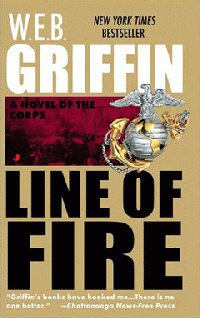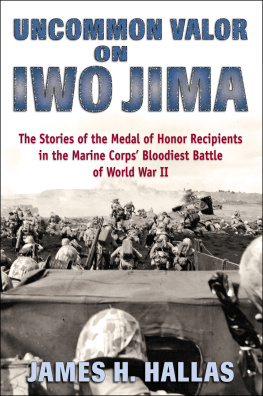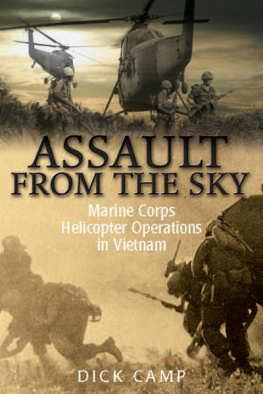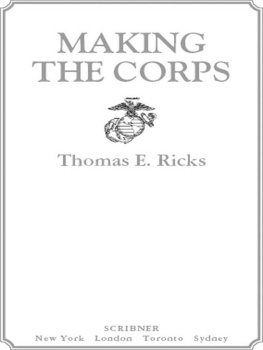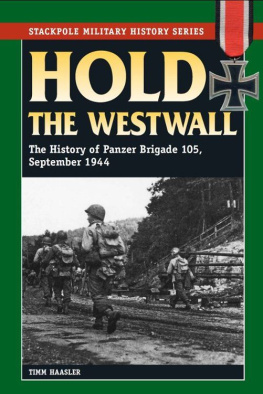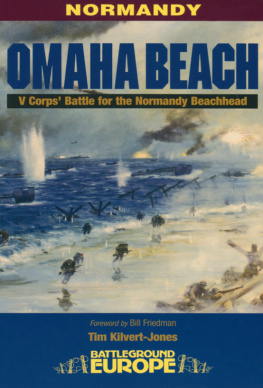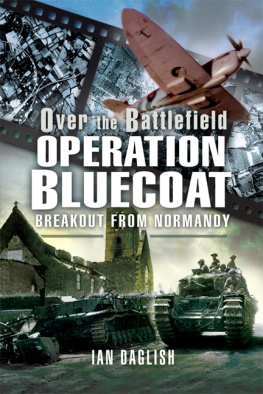ACKNOWLEDGMENTS
T his book took nearly ten years to research and write. During this time there were those who took interest in its development, revisions, and final iterations. Others provided support and encouragement. Here they are, in no particular order of importance.
The late Roger Hilsman, President John F. Kennedy's assistant secretary of state for Far Eastern Affairs in the early 1960s and author of many books, graciously provided valuable assistance in getting my efforts at writing about military history topics to publishers back in the 1990s. While he was too ill to review drafts of this book, to this day I remain exceedingly grateful to Roger for his earlier help in jump-starting my writing career.
It was also my good fortune to have befriended Lt. Col. Mark J. Reardon (Ret.) as the years progressed. Mark, then a senior historian at the U.S. Army Center of Military History in Washington, D.C., coached me to write in a way that put emphasis on unit historical records and personal accounts written during World War II, thus preserving it like it was and allowing the actions of individual officers and soldiers to speak for themselves. He also contributed to this book by providing primary source material, mostly narratives and histories from the German side.
As it was for the first book that I wrote with Mark's help, American Iliad: The 18th Infantry Regiment in World War II, Andrew Woods's and Eric Gillespie's support at the Cantigny First Infantry Division Museum and McCormick Research Center in Wheaton, Illinois, during the development of this book deserves special mention. I am also sincerely grateful to Mr. Warren Watson for his vast help in allowing me to become more knowledgeable about 30th Infantry Division participants during the battle for Aachen; his website www.oldhickory30th.com contains numerous oral histories, primary source material, maps, and pictures that helped birth chapters of this book. And I also want to thank two very special people at the National Archives Still Picture Reference Center in College Park, Maryland: Holly Reed and Theresa M. Roy assisted me with genuine kindness and immeasurable patience in retrieving and copying pictures that I hope are helpful for visualizing the Aachen fight.
It is not an exaggeration to say that this book may have never found its way to you were it not for my lifelong friend and cousin Cyrus Clark III and his wife, Judy, of Somers, New York. They provided both encouragement and nudging to knuckle down and write when I needed it most. Judy's late father, Jack Mates, was extremely kind over the years to me. A World War II B-17 pilot, he was instrumental in forming the Distinguished Flying Cross Society after retiring from a successful business career. Words he wrote to me in 2013 when he sent a copy of On Heroic Wings: Stories of the Distinguished Flying Cross provided a touching inspiration for me to keep writing about his selfless generation.
Charles Perini and his wife, Nancy, in Mystic, Connecticut, dear friends for many years, were always there when it counted. Charles pushed me as only a true friend can and encouraged me to focus on visualizing and writing this book. How can I ever really thank you, Carlo?
The same for Arnie and Deb Wheaton of Rochester, New York, two people I've been fortunate to know since the 1970s. Arnie took the time to read some excerpts before this book was published, and his genuine eagerness and encouragement deserve special mention. Thank you, Weedo, for your unflagging support.
Others also made a difference with their help during the time this book was being written. Barry Konet of Madison, Connecticut, deserves special mention, as does Paul Braschi of Norwalk, Connecticut. A college fraternity brother, a friend during all the years since, and an immensely successful business and family man, John C. White of Scottsdale, Arizona, was particularly instrumental in making this book possible.
At Stackpole Books, Dave Reisch cast a professional eye in guiding the book from manuscript form to publication. Brittany Stoner was very efficient in overseeing the book's actual production. Wendy Reynolds's work in doing the pagination and final layout of the book is most appreciated. I want to especially thank Ryan Masteller for his work as copy-editor; his task was not easy, but he conducted it with patience and a mind for clarity.
In the midst of the fight to establish a firm bridgehead across the Wurm River north of Aachen on 3 October 1944, Col. Walter M. Johnson of the 117th Infantry was overheard breaking up the tension by needling a writer. Get that regimental historian up here to the CP, he shouted loud enough for everyone to let loose with a laugh. He is supposed to be writing combat history and how can he write it when he is sitting back in the rear?
Thank you, colonel. Without the narratives written at the time by that Army historian and the many others who chronicled the Aachen fight, it would not have been possible to write this book seventy years later. Nor could American fighting prowess at its best have been read today by those of you who turn the pages of this book.
My most heartfelt thanks to you as well.
Robert W. Baumer
Ormond Beach, Florida
AFTERWORD
C asualties during the battle for Aachen were about equal. German divisions suffered approximately 5,000 killed or wounded. An estimated 5,600 others were taken prisoner in and around Aachen; 3,500 either surrendered or were captured in the city. U.S. losses exceeded 3,000 in the 30th Infantry Division alone. The 1st Infantry placed their casualties at 1,350; 150 were confirmed as killed. The total number of Americans who lost their lives during the five-week period approached 1,000, including those reported by the 2nd and 3rd Armored Divisions.
In The Battle of Aachen in Memory of the City: From Capitulation to the Liberation (19442014), Dr. Peter M. Quadflieg, a current-day Aachen historian, traces the way the people of Germany have interpreted the end of World War II. He points out that over the past seventy years a reinterpretation has evolved of the problems Germans have had with the historical date and the public discourse that has since led to seeing the cessation of hostilities in early May 1945 as a day of liberation from war and Nazi dictatorship. In parallel with these patterns a regionally shaped culture of remembrance developed in Aachen. The surrender of the city on October 21st, 1944 has been reframed as an act of liberation.
Americans always saw it as such. The solemn words of President Franklin D. Roosevelt, sent to the mothers and fathers of U.S. soldiers who lost their lives during the Aachen fight, framed their losses some seventy years ago:
He stands in an unbroken line of patriots who have dared to die
That freedom might live, and grow, and increase its blessings.
Freedom lives, and through it, he lives
In a way that humbles the undertakings of most men.
BIBLIOGRAPHY
Arn, Edward C. and Jerome Mushkat. Arn's War: Memoirs of a World War II Infantryman, 19401946. Akron, OH: University of Akron Press, 2006.
Balkoski, Joseph. From Brittany to the Reich: The 29th Division in Germany, SeptemberNovember 1944. Mechanicsburg, PA: Stackpole Books, 2012.
Baumer, Robert W. with Mark J. Reardon. American Iliad. The 18th Infantry Regiment in World War II. Bedford, PA: Aberjona Press, 2004.
Baumgartner, Lt. John W., 1st Sgt. Al DePoto, Sgt. William Fraccio, and Cpl. Sammy Fuller. The 16th Infantry, 18611946. DuQuoin, IL: Cricket Press Millennium Edition, 1999.



